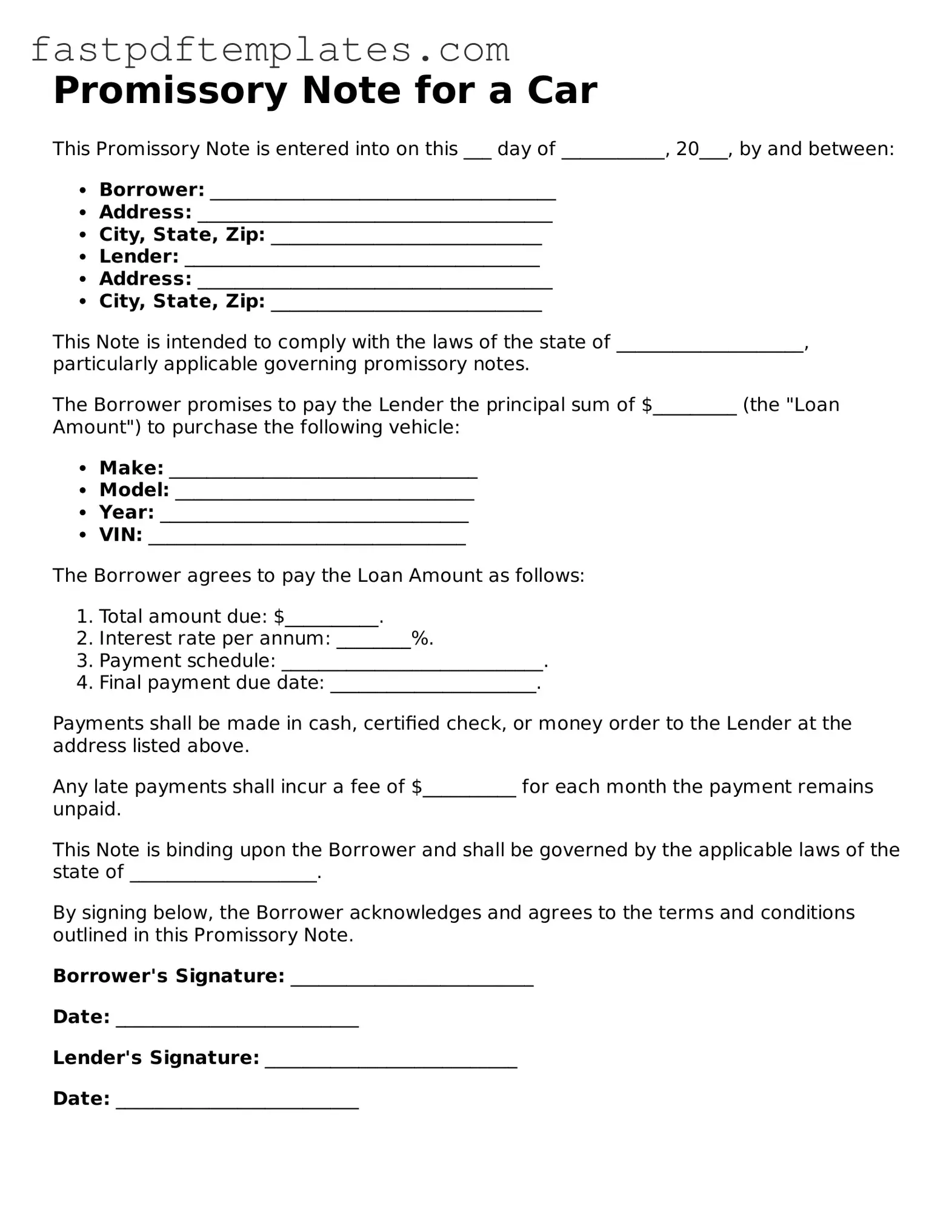Promissory Note for a Car
This Promissory Note is entered into on this ___ day of ___________, 20___, by and between:
- Borrower: _____________________________________
- Address: ______________________________________
- City, State, Zip: _____________________________
- Lender: ______________________________________
- Address: ______________________________________
- City, State, Zip: _____________________________
This Note is intended to comply with the laws of the state of ____________________, particularly applicable governing promissory notes.
The Borrower promises to pay the Lender the principal sum of $_________ (the "Loan Amount") to purchase the following vehicle:
- Make: _________________________________
- Model: ________________________________
- Year: _________________________________
- VIN: __________________________________
The Borrower agrees to pay the Loan Amount as follows:
- Total amount due: $__________.
- Interest rate per annum: ________%.
- Payment schedule: ____________________________.
- Final payment due date: ______________________.
Payments shall be made in cash, certified check, or money order to the Lender at the address listed above.
Any late payments shall incur a fee of $__________ for each month the payment remains unpaid.
This Note is binding upon the Borrower and shall be governed by the applicable laws of the state of ____________________.
By signing below, the Borrower acknowledges and agrees to the terms and conditions outlined in this Promissory Note.
Borrower's Signature: __________________________
Date: __________________________
Lender's Signature: ___________________________
Date: __________________________
